Motorcycling the Roof of the World
David Jennings
I put my helmet on and kick-started the engine, revving it loudly – its roar was thunderous and clean, the result of considerable last-minute maintenance at various mechanics around the Kangra valley, who banged and ratcheted it into temporarily working condition.
My girlfriend Dolker gave her sister one last hug goodbye, then together, each on our own Enfield, we rode away waving, watching Dharamshala recede in the rearview mirror. From now on it would only be the two of us, alone for thousands of kilometres through the high-altitude deserts and mountains of Northern India.
Indian highways are some of the world’s most unfriendly. They are narrow, lawless, crowded affairs, full of cows and unlicensed drivers. Wanting to avoid the busy ones as best we could, we took the scenic route from Dharamshala to Dalhousie, veering off the Kangra-Jammu highway onto a bumpy orange dirt road that we had mostly to ourselves for nearly a hundred kilometres.
The road wound us through forests and over hills of orange clay. Dolker rode in front of me, her loose back wheel wiggling, her scarf ribboning behind her like a flag of rebellion.
The ride was exhilarating – it felt as though I was on a chair hovering through space, the world warping around me, villages blurring by. Unlike in a car or bus, on a motorcycle you are within the elements, part of the mixture of humidity and sun and air. Every part of the body feels the changes from one atmosphere to the next.
On the third day we entered the Kashmir Valley from the south, passing through the Jawarhal Tunnel – a long, dark, damp hole between Banihāl and Qazigund that looked as if it were carved out by hammers and picks. This made it all the more refreshing, however, when the Kashmir Valley washed over us on the other side, with its cool air, and valleys full of gleaming rice paddies and snow-capped mountains.
The ascent was sublime and relaxing, and as we passed the first small town the first signs of Kashmiri culture began to appear. But, just as quickly we were back in the countryside, surrounded by air cooler, fresher and sweeter than the dusty Punjabi heat we’d been experiencing the past two days.
This appreciation of the climate did not last long. My attention was forced back to the vagaries of the highway: the endless task of overtaking giant trucks around hairpin bends; or dealing with the sometimes hours-long traffic jams, which we always managed to squeeze past, bumping through ditches over stones and sliding between stalled cars to the front of the jam, where often the cause would be a dozing cow or some man banging on his truck with a wrench.
My girlfriend Dolker gave her sister one last hug goodbye, then together, each on our own Enfield, we rode away waving, watching Dharamshala recede in the rearview mirror. From now on it would only be the two of us, alone for thousands of kilometres through the high-altitude deserts and mountains of Northern India.
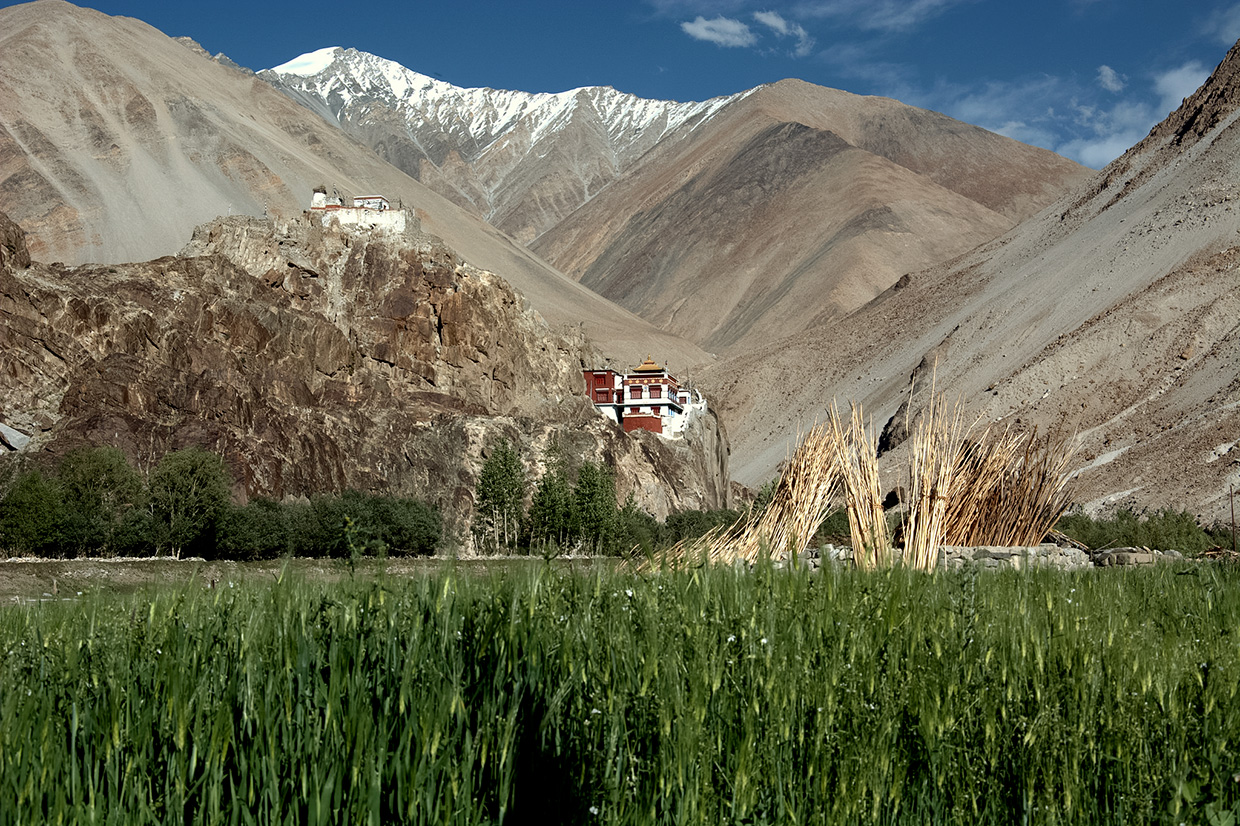

As he showed Dolker the houseboats, I watched the giant vessels sway and creak against their moorings. They were far larger than I imagined. Some were over 40 meters, but many of those in my line of vision were so old and busted up that they’d already half-sunk into the water. Some consisted only of a wooden roof sticking out of the lake.
We had our first taste of the rugged Himalayan roads we’d heard so much about – roads full of avalanched stones, cut through glaciers and crossed by knee-deep streams that you had to plough through without thinking, or slowing down. It was some of the roughest riding I’d ever experienced
We spent the next two days racing around Srinagar in search of various motorcycle parts and mechanics who could help us install them. On the third morning, we pushed out at 6am.
Another problem began within the first hour: as we gained altitude climbing out of the valley, my motor began powering down until it would barely run at all. Later, as I rode along at this leisurely bicycling speed, a car bumped into me and sent me swerving off the road into a ditch. But by noon we had reached the beginning of the first pass, Zoji La (3,450m). Unfortunately it was closed to our direction of traffic and we had to wait at the military checkpoint for nearly three hours.
When they finally released us we had our first taste of the rugged Himalayan roads we’d heard so much about – roads full of avalanched stones, cut through glaciers and crossed by knee-deep streams that you had to plough through without thinking, or slowing down. It was some of the roughest riding I’d ever experienced, but once we made it over Zoji La we were rewarded with our first stunning panorama of the arid ranges of Ladakh.
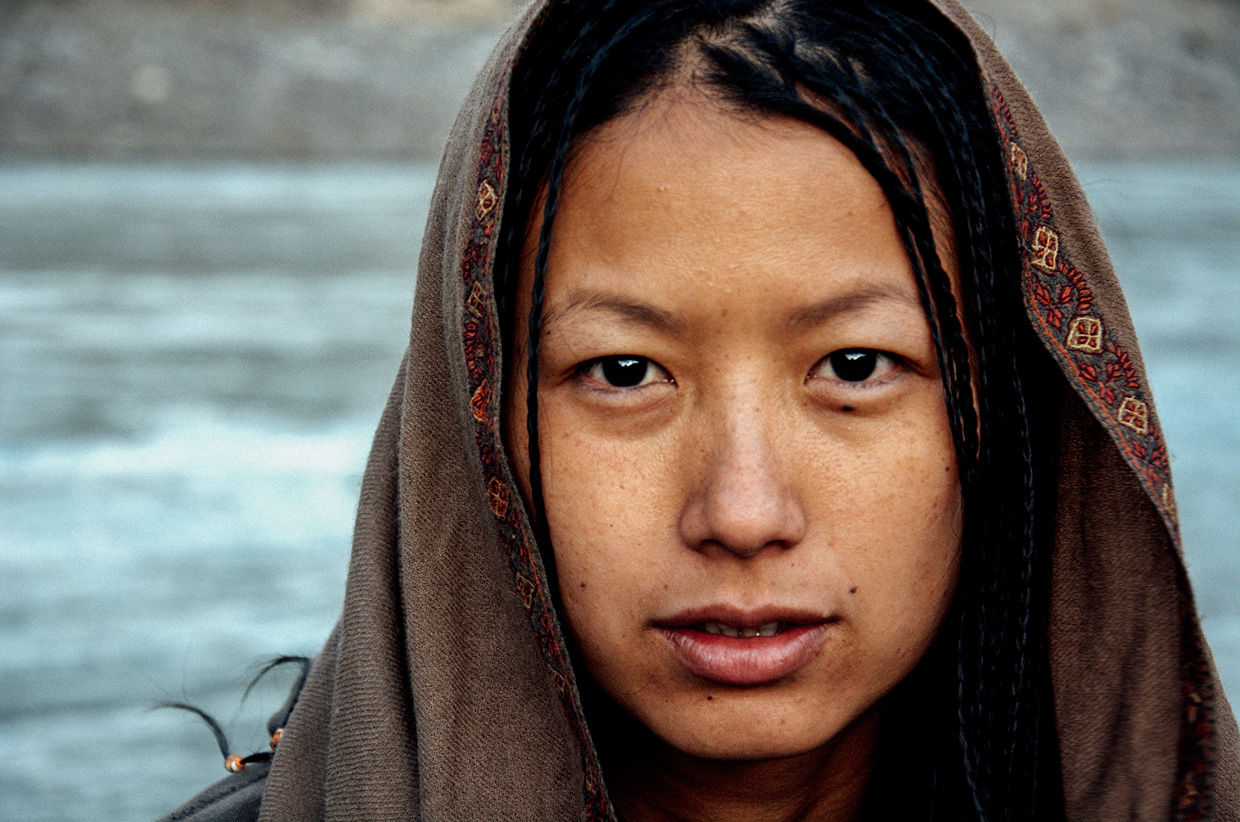
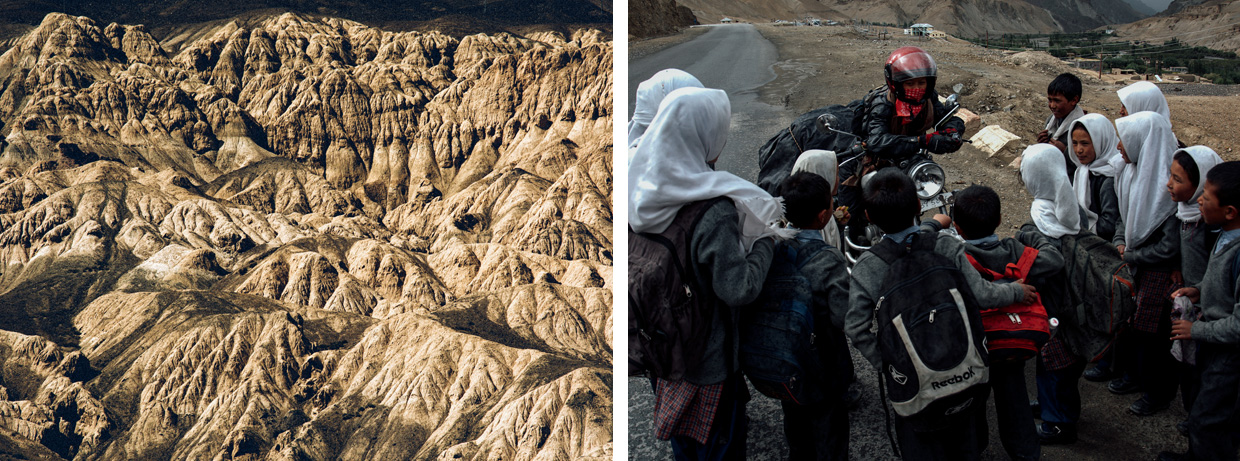
Ever since Dras, the culture, along with dress and racial characteristics, was slowly transitioning from Kashmiri Muslim to Ladakhi Buddhist. Minarets became infrequent, stupas and monasteries began to appear, faces grew flatter, eyes became smaller until finally, at Lama Yuru, we were firmly entrenched in the Ladakhi world.
We stayed in a private home below the massive white monastery, and the following morning saw a day-long ritualistic Cham dance in the monastery courtyard, in which monks in heavy robes and giant, fearsome masks initiated the crowd by dancing through the trials they believe all humans face in the bardo after death.
We watched for nearly eight hours, entranced by the strangeness of this sacred performance, which left deep impressions in us both – so deep that the imagery haunted me for the rest of the trip.
The following morning we strapped our gear to the bikes and resumed the ride. Soon we had entered an area that looked like the surface of a yellow moon. The shapes of the rocks, formed from eons of little rain and endless wind, were impossible not to stare at as I rode – not an easy task on such winding, bumpy roads.
Around two mountains, down dozens of switchbacks to the clean, white-blue Indus River, we rode from one strange uninhabited expanse to another, passing stark, steep mountains, winding around narrow gorges and wide canyons, through wastelands of sculpted stone.
On one isolated stretch we came upon a crew of dusty Ladakhis hunched over with handbrooms sweeping dirt off the highway. Dolker stopped to talk with them. I pulled over and waited for her to ride up.
‘Why are they sweeping the highway?’ she asked. ‘The Dalai Lama is visiting a village near here in a few days,’ one of them replied. ‘So they sweep the highway?’ ‘Yes, they sweep it because he is coming.’ ‘But as soon they sweep it it gets covered in dust again.’ ‘All the same, they sweep.’
On we rode, hour after hour, lost in the landscape. Nothing could deter us or darken our mood. We rode under the clear sky through air as dry as chalk, making our lips and hands crack. At times we pulled to the side of the road and cut the engines, just to listen to the silence. Sometimes we screamed out over the canyons, listening to our voices echo back from many directions.
As my sun- and wind-burned hands gripped the handlebars, I tried to imagine what this alien land must have looked like to those who first wandered here millennia ago. What restlessness could have driven them to such a dead and celestial place?
We strapped our gear to the bikes and resumed the ride. Soon we had entered an area that looked like the surface of a yellow moon. The shapes of the rocks, formed from eons of little rain and endless wind, were impossible not to stare at as I rode – not an easy task on such winding, bumpy roads.
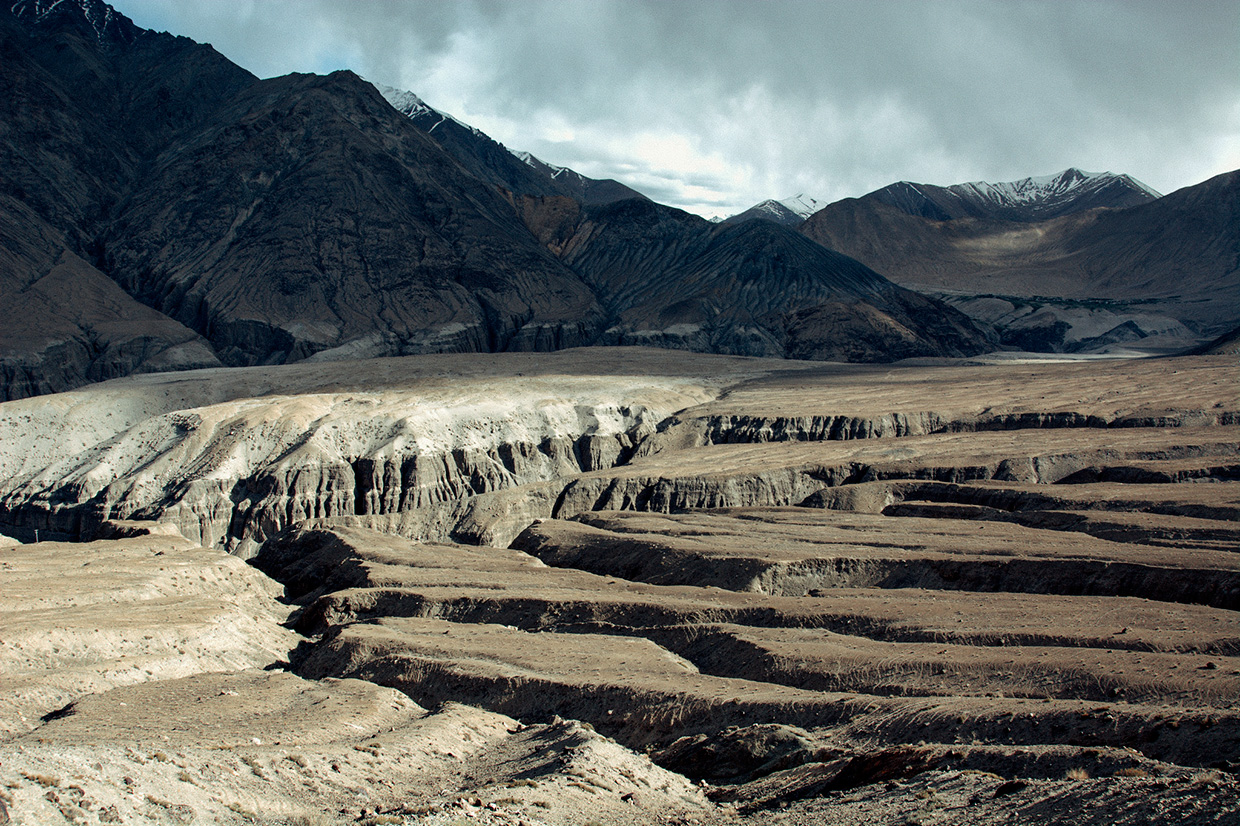
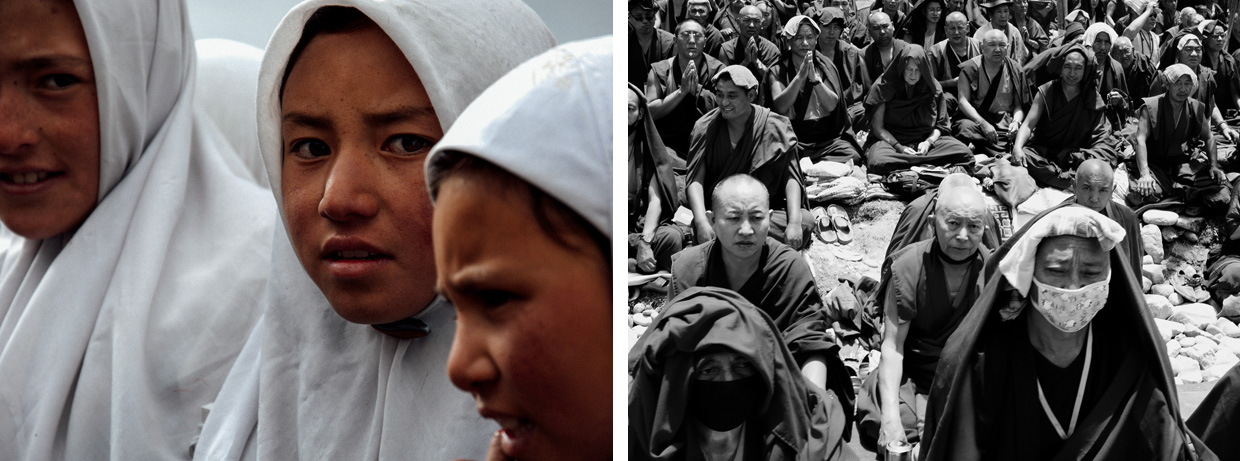
Daydreaming, I noticed too late some loose gravel on the road as I rounded a steep switchback and my bike slipped from under me, catching my foot in the luggage rack. I landed on my stomach, my helmet smacked the gravel and, with the bike on top of me, I slid to a stop.
I cut the engine and tried to crawl out from under the bike, but it was impossible. The enormous weight was entirely on my ankle and the bike wouldn’t budge. I couldn’t even to lift my head to see if any cars were coming. On the ground where I was pinned like an insect, gasoline leaking all over me, it would have been easy for a car to round the curve and run me over.
Then I heard Dolker’s frightened voice shout, Joshua! and a car door open and shut. The bike lifted off me and I rolled over to find Dolker above me and a stranger walking the bike to the side of the road.
She helped me to my bike and took my boot off. My ankle was bruised and some of my toes were bleeding, but I could still operate the footbrake without too much pain. Ten minutes later we were back on the road, my ankle throbbing as we rode. There being no doctor until Leh, it was useless to worry for the time being.
We reached Leh three days later, but by then my ankle had healed somewhat. After two days of rest and recuperation, we set out over the Khadung La Pass (at 5,602m, the highest motorable pass in the world) for Nubra, an arid valley wedged between India, Tibet and Pakistan.
It was in Nubra that I really began to appreciate how diverse and celestial the landscape of a high-altitude desert like Ladakh could be. Descending from Khardung La, we crossed a jagged, desiccated canyon, and each of the mountains that came into view around the hairpin curves seemed to exude a different persona. Some were purple and ill-formed, like evolving, fetal creatures, while others were steep and red and orange, others yellow and kingly, or black and capped with blinding cones of snow.
It was not hard to see how the people of the region believe each mountain possesses its own soul.

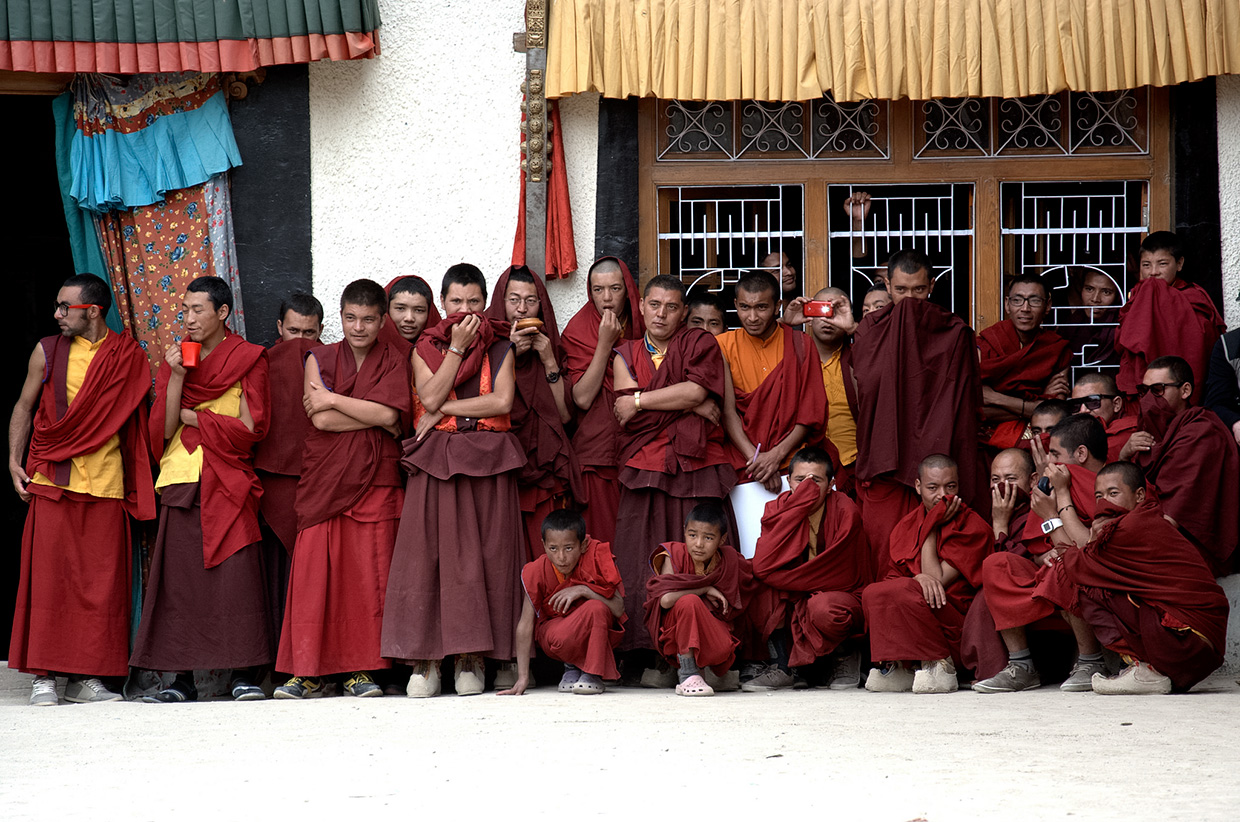
We continued to explore the valley until we ran out of petrol two days later. When we finally decided to make another go at Khardung La pass, we only made it as far as the military base when my bike refused to climb any further. I didn’t know it then, but my carburettor diaphragm had holes in it and wasn’t taking in enough air.
We managed to find an empty load truck willing to take our bikes to the top for 500 rupees, but as the men got to work strapping down the bikes I knew there was no way it was going to work. The road over the pass was one of the worst I’d been on – full of potholes and avalanched stones and rushing streams, with loose scree above and paths chopped through perpetually expanding and melting glaciers. We’d already come over that road on the way into Nubra and I knew the bikes would be damaged.
We decided to ride back there with them, but when we crawled into the back of the truck a military officer ordered us to get down. It’s too dangerous, he said. Not long ago some people riding in the back of a truck were killed by “shooting stones” and now it was forbidden.
When the pass opened, Dolker rode with the truck carrying our bikes, I rode in the truck behind it. It didn’t take long before Dolker’s bike had slid onto its side, then a big bump sent mine leaping against the wall, bending the right handlebar back onto itself.
‘Stop!’ I shouted. I leapt down from the truck and ran up to Dolker’s window. ‘The bikes are being thrown everywhere. They can’t make it like this. We have to ride back there with them.’
It took a while for the driver to strap them down again, and we wedged ourselves between the bikes, wearing our helmets to protect us from falling rocks. It was a lot rougher than I imagined. Entwined in the web of straps, we used every ounce of our altitude-enfeebled strength to keep the bikes from being damaged. My brain began to throb as we climbed higher into the atmosphere. I could barely breathe. As my clarity began to deteriorate, my head started womping and my vision darkened. It felt I could collapse at any moment, but we still had a long way to go, and the road only grew worse.
It was narrow, often barely wide enough for a single vehicle, and had no guardrails. Some stretches were no more than a hacked-open path through a glacier, with a steep plummeting drop-off to the left.
I kept my eyes on the rocks above, overloaded with ice and fresh snowfall. It felt as if there could be another landslide at any moment and I began to plan accordingly, thinking of how best we could leap out of the truck should we begin sliding over the edge.
In theory, the pass was only supposed to be open to one-way at any given time, allowing vehicles to make their way over these dangerous roads without getting stuck in landslide-prone areas because of a jam. But in practice, this rule wasn’t regulated, meaning at bottlenecks both lanes came to a standstill, unable to go forward or reverse.
When we finally reached the top of the pass, the truck dumped us and our defective bikes in the snow and took off. I managed to bend my bars back into a working shape and we rolled in neutral down the mountain to Leh, where a team of mechanics got our bikes into workable condition again. We then rode south for Choglamsar, a dusty suburb of Leh, where we pitched our tent outside a makeshift restaurant near the grounds where the seven-day Kalachakra was being given by the Dalai Lama – a tantric initiation ceremony that had attracted hundreds of thousands of Ladakhis as well as other Buddhists from around the world.
I kept my eyes on the rocks above, overloaded with ice and fresh snowfall. It felt as if there could be another landslide at any moment and I began to plan accordingly, thinking of how best we could leap out of the truck should we begin sliding over the edge.
Heading south, we left the Leh-Manali highway for a detour over Chang La pass (5,425m) to Pangong Lake, where we camped for two nights under a full moon before returning to the road south. Two more full days of riding over four more of the world’s highest passes – Taglang la (5,325m), Lungalacha la (5,059m) Baralacha la (4,892m) and Rohtang la (3,978m) – and we finally reached Manali, the beginning of the relatively smoother highway back to Dharamshala.

David Joshua Jennings is a travel writer from the United States. He has spent much of the last eight years traveling to more than fifty countries and writing about his experiences. He currently lives in Jogibara village, near Dharamshala, India.
You can follow his writings at www.davidjoshuajennings.com



